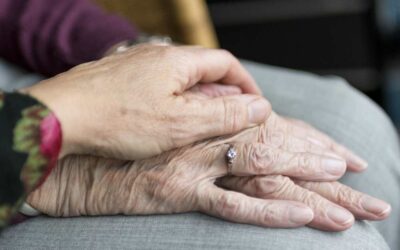The Joint Covid-19 Legislative Work Group met this Wednesday May 20th to convene after Governor Hogan announced that Maryland would begin the reopening process on a county-by-county basis. Read highlights from this week’s briefing that featured representatives from Montgomery and Howard Counties, as well as an update on testing benchmarks, testing sites, and recovery.
Testing Benchmarks:
- We need to have benchmarks we are meeting:
- Working to get test positivity rate below 10%
- As a county we peaked at a 30% test positivity rate, and are down now to about 15%.
Mortality Rates:
- In Anne Arundel we have seen a mortality rate 50% higher in African Americans.
- In Hispanic populations we are seeing about 3-4 times as many people positive.
Testing sites:
- Testing capacity is increasing, we have locations that are operating 7 days a week.
- We have 10 walk-up testing locations in various communities.
- On Tuesdays & Thursdays we have drive thru testing set up in Annapolis
- On Wednesdays & Fridays we have the same in Glen Burnie.
- We have targeted testing for multiple populations in congregate settings such as first responders, shelters, nursing homes, jail and correctional facilities.
We have a range of measures we are using to monitor our recovery.
- Just received a memo that we will be getting an additional 500 tests per week.
- We want to test 2% of our population each week as a way to get surveillance out in the community and identify potential hot spots.
- We have contact traced each of the 3000 cases we have had so far.
- We have 101 people doing contact tracing right now,
- Want to hire new people to add to the contact tracing team with the funds from CARES.
Update: Dr. Travis Gayles
Montgomery County Department of Health and Human Services
- We have the second highest number of residents that have tested positive for Covid-19.
- Working with the state system to provide additional support for contact tracing.
- We have been following cases from the very beginning, as the volume increased we created a priority system that focused on congregate living places including our nursing homes settings, pediatric cases and any individual that fell into the “vulnerable communities”, including those over the age of 60 as well as any of our first responders.
- Created a buffet of testing options:
- Offering drive thru testing in various sites
- Created a mobile testing helpline that went live last week
- individuals can call in and get triaged and screened using our medical volunteers and can then get referred to any of the alternative test sites.
- If they do not have insurance that is no issue.
- Creating a mobile testing arm to be able to go out and do pop up tests at different sites
- Will also partner with our human services colleagues in providing a case management component.
- Teams for the past 3-4 weeks have been working with our community in identifying those in need, and have done testing in people’s residences.
- They have helped make sure that we have tested our high risk population in our shelter community to make sure they have access to testing services as well.
- Would like to increase our testing capacity, would like to screen those that are asymptomatic, and our essential employees.
- We would like to test 5% of our population on a monthly basis.
Update: Dr. Maura Rossman
Howard County Health Department
- Been working towards a public/private partnership to increase our testing capacity.
- We have a hospital tent open 5 days a week for testing for the community
- There are 2 urgent care centers operating between 5-7 days a week for diagnostic testing at no cost to the resident.
- Howard County Health Department is limited to 200 staff which is not enough to continue all the expansion we need to do in response to the pandemic.
- In the midst of interviewing temporary contingent staff.
- 50% of our deaths are related to those living in congregate facilities.
Q&A
Delegate Pena-Melnyk:
How many tests have you received from the state? Are any of those tests from Korea? Do you know if the labs have begun processing some of those Korean tests? How many nursing home strike teams have been requested for your jurisdiction?
Dr. Nilesh Kalyanaraman:
I don’t have a good way to answer the question about the number of tests that were specifically from Korea. We get limited testing supplies from the MD Department of Health that we have been exclusively been directing towards congregate settings and first responders. My understanding is that the additional tests that are coming in are probably a representation of that but from my perspective, I don’t ask where they come from, I just want more.
Dr. Travis Gayles:
It’s hard to quantify, I know that we have received kits related to the very beginning. I do know that we have benefitted from the responder teams that have been apart of the health department. Those were sent out to jurisdictions that had the highest number of cases, so they have tested a number of residents in their homes. They have started testing in some of our assisted living facilities and all of those tests are sent through the state system.
Dr. Maura Rossman:
All of our tests that we have used in our congregate facilities come from the MD Department of Health and I too don’t know if they came from Korea. We are just grateful to have them. This week the strike teams are at three different nursing homes in Howard county.
Senate President Bill Ferguson:
I’m curious about your perspectives now that the shift happened on Friday to a more locally driven approach to recovery. As the counties have different approaches and as there is sort of more local discretion on the recovery phase, how are you all approaching that and how are you all seeing your roles as local health departments there?
Dr. Travis Gayles:
We all met to discuss metrics, we have had conversations with state colleagues, colleagues in DC and Virginia to make sure we are all on the same page as we move forward. We would have preferred there to be more of a state led effort in recognizing the challenges different jurisdictions have as opposed to leaving it to us to figure out those metrics. It has created a dynamic where we have been put on the defensive as local health departments in terms of justifying why we aren’t opening up and why our metrics don’t match up. It’s been tricky, but we are working with our colleagues to make sure we are collaborating as we move forward. We are continuing to think through strategies for what a Phase 1 looks like. I am nervous to do that based on what our numbers look like today. I’m not sure we will be able to achieve the full level of Phase 1 opening that the rest of the state has in Montgomery county.
Dr. Nilesh Kalyanaraman:
A state level approach gives more uniformity across counties. We are usually given no warning about what is coming. We see the governor’s live feed like everyone else, then are put in the position of reacting. That’s the time pressure we operate under. Going forward we will continue to collaborate with each other, but we are not the only part of this.
Dr. Maura Rossman:
Were in unchartered territory in terms of approaching this pandemic. We are all trying to figure out data points and metrics from research papers and coming up with quantitative numbers. I think the numbers may need to be revised as we learn more. Right now we are trying to figure out: who is infectious? Get them into isolation and their contacts into quarantine. This pandemic is going to be around for quite a few more months, its not going away even though we are getting it better contained and mitigating the spread. As we reopen things may need to be adjusted and pulled back accordingly based on what we are seeing.
Senator Jim Rosapepe:
I find a lot of my constituents really confused about testing. About whether they can get tested or not. How can we help make clear to people that they can be, should be, and will be tested?
Dr. Nilesh Kalyanaraman:
In March we wanted to test anyone with symptoms, and we didn’t have the testing capacity. Our testing capacity has slowly increased and with that the criteria and trying to get more people in, but it is a confusing message to communicate, especially when it changes every week to two weeks. Right now we are in a position to say that if you have symptoms or if you don’t and just want to get tested you can. We have gotten where we want to be so I think that will help with the message going forward.
Dr. Travis Gayles:
The evolution of testing and testing criteria has rapidly evolved. We have come very far in the past 8 weeks. Part of the challenge is that the public health infrastructure is not a modern infrastructure. I think it speaks to the need to invest more in the public health infrastructure, particularly around the ability to communicate in timely manners, to be able to distribute information to the populations that are struggling to figure out what is the most recent information. In the absence of those mechanisms to get that evidence based information out quickly, people will utilize a lot of spaces from social media to other platforms that don’t always have the most up to date or factual information.
Delegate Shane Pendergrass:
My concern is in the lack of response from the MD Health Department. Dentists are struggling to find legitimate PPE; the new directive says they can do elective and urgent procedures. They would be able to be put on the list of essential emergency personnel so that they might be able to access the states supply of equipment. Do you have any comments on that issue?
Dr. Travis Gayles:
For our colleagues at the State Department of Health, Deputy Secretary Phillips and her team have been responsive to us in terms of addressing our concerns. She and her team have participated in weekly calls with us to provide feedback. I want to make sure you understand that we value that relationship and received a lot of positive feedback. As far as your question regarding dentists, we have taken those guidelines and our dental director is coming up with guidelines to be able to provide to dentists. If there are PPE concerns, they can send them through our command center so that we can try to address it and provide some provisions of PPE for them to be able to reopen. We have heard from dentists a significant amount of concern about the readiness to reopen. We don’t have a lot of dentists rushing out to reopen right now.
Dr. Nilesh Kalyanaraman:
Our contacts at the MD Department of Health have been really positive. They get caught off guard too. Many times they are in the same boat as us. There are a few dental practices looking to open. We have a distribution plan for PPE across hospitals, nursing homes, dental offices, first responders. There are opportunities to get PPE if they are unable to source it on their own.
Senator Steven Hershey:
How is the risk of a spike affecting the advice you’re providing county executives for their decision making in implementing or delaying Phase 1 openings? Based on the county by county approach, aren’t the health officers in those counties just as capable of providing advice to allow expanded levels of opening, possibly even exceeding Phase 1 and entering Phase 2?
Dr. Nilesh Kalyanaraman:
Right now we’re still limited by what the governor has allowed. In the Governor’s Executive Order it says you can go up to these things, as a county you can choose to do less than that. We don’t currently have the ability to go beyond what the Governor has allowed. That doesn’t mean we are not planning for those. Our County Executive is meeting with our economic development counsel and others to look at how we map out and provide guidance to be able to do that. We know as we open up more sectors we are expecting to see more cases, that’s where the focus on testing, contact tracing, isolation, and quarantine comes into play.
Dr. Travis Gayles:
Right now we really have to work to get our numbers down to get us on the same level as other parts of the state. We are working together as a region. We want to be consistent in moving forward.
Senator Steven Hershey:
My district is concerned with Memorial Day weekend and the summer coming up and being able to get businesses open. The general public needs to know what the goals are. Most thought it was flattening the curve, but it now seems to be potentially mitigating a spike that could be down the road. We are looking at a more regional approach.
Speaker Adrienne Jones:
Concerned about potential pediatric cases. Is this being monitored or are there separate trajectories?
Dr. Travis Gayles:
Before being a health officer I was a pediatrician. There have been case reports across the country where children have been diagnosed with Covid-19 and have developed symptoms that are consistent with Kawasaki disease. It causes inflammation of the vessels around the heart and can even cause aneurisms. Children’s National has 7 or 8 cases right now, we received a report yesterday that we may have one of those cases here in Maryland. We are learning lots of new stuff every day.
Dr. Nilesh Kalyanaraman:
This is very different from the flu. We are seeing that there are a lot of consequences of getting Covid-19, that is not the same as the flu. We’re seeing clotting disorders, kidney damage, and heart damage. We are learning along with you in real time.
If you have any questions or concerns explore our COVID-19 resource page, or reach out to us directly at 410-321-8200.




